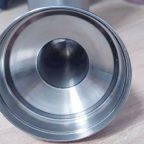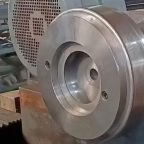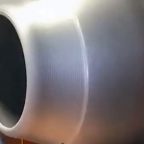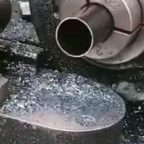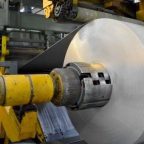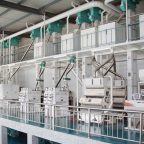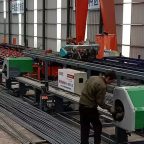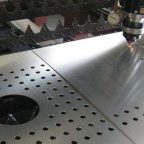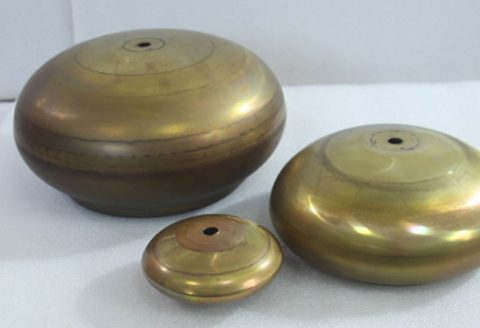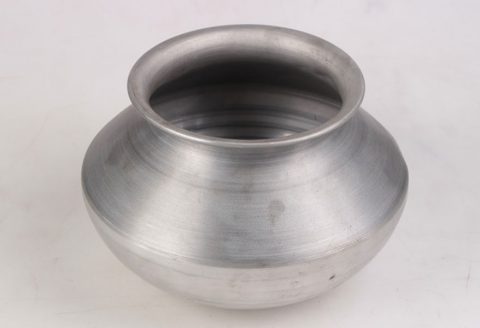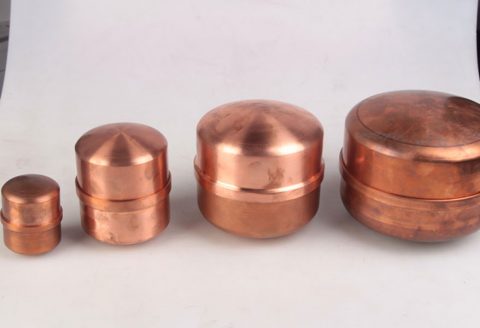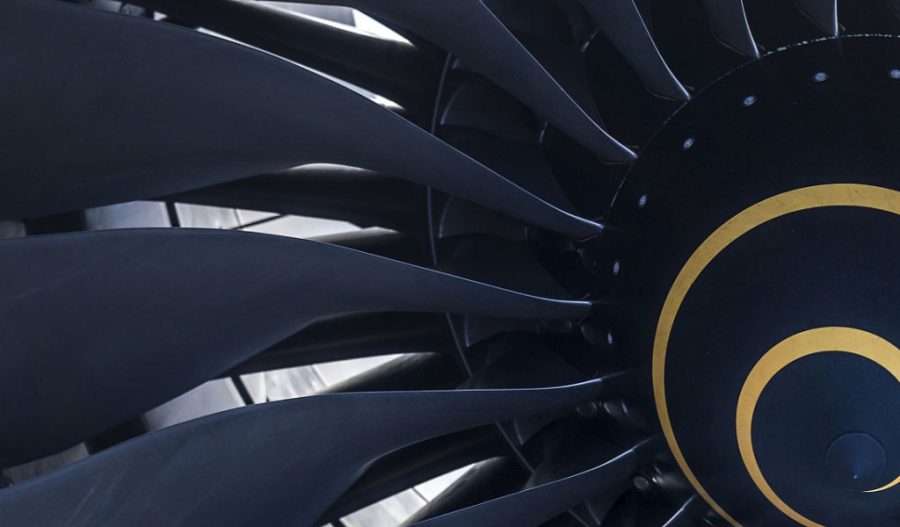
Industrial centrifugal fans are critical components in a wide range of applications, from HVAC systems to heavy-duty industrial processes such as cement production, power generation, and chemical manufacturing. The housing of a centrifugal fan, often referred to as the scroll or volute, plays a pivotal role in directing airflow, managing pressure, and ensuring operational efficiency. Processing the housing involves a complex interplay of material selection, design optimization, manufacturing techniques, and quality assurance. This article provides a comprehensive, scientifically grounded exploration of the processes involved in designing, fabricating, and testing industrial centrifugal fan housings, with a focus on achieving high performance, durability, and compliance with industry standards.
Overview of Centrifugal Fan Housings
Centrifugal fan housings are structural enclosures that encase the rotating impeller, guide the airflow, and convert kinetic energy into static pressure. The housing typically features a spiral or volute shape, which gradually expands to slow the air and increase pressure as it moves toward the outlet. The design and construction of the housing significantly influence the fan’s aerodynamic performance, noise levels, and structural integrity. Housings must withstand harsh operating conditions, including high temperatures, corrosive environments, and mechanical stresses induced by vibration and airflow.
The processing of centrifugal fan housings involves several stages: design and engineering, material selection, fabrication, surface treatment, assembly, and testing. Each stage requires careful consideration of the fan’s intended application, environmental conditions, and regulatory requirements. The following sections delve into each of these stages in detail, providing a step-by-step guide to processing high-quality centrifugal fan housings.
Design and Engineering of Centrifugal Fan Housings
Aerodynamic Design Principles
The design of a centrifugal fan housing begins with aerodynamic considerations to optimize airflow and pressure characteristics. The housing’s primary function is to convert the high-velocity air exiting the impeller into static pressure while minimizing energy losses. The volute shape is critical to this process, as it ensures a smooth transition of airflow from the impeller to the outlet.
The geometry of the housing is typically defined by the following parameters:
- Volute radius: The radius increases logarithmically or linearly from the impeller’s periphery to the outlet, following a spiral pattern.
- Cross-sectional area: The area of the volute expands to reduce air velocity and increase pressure.
- Tongue angle: The volute tongue, where the housing begins to diverge, influences airflow separation and noise generation.
- Inlet and outlet dimensions: These determine the fan’s compatibility with ducting systems and its ability to meet airflow requirements.
Computational Fluid Dynamics (CFD) simulations are widely used to model airflow within the housing. Software such as ANSYS Fluent or OpenFOAM allows engineers to analyze velocity profiles, pressure distributions, and turbulence. For example, a study on a 9-26-4A high-pressure centrifugal fan demonstrated that optimizing the volute tongue angle reduced aerodynamic noise by 1.05 dB per 1000 m increase in altitude.
Structural Design Considerations
In addition to aerodynamic performance, the housing must be structurally robust to withstand mechanical stresses. Finite Element Analysis (FEA) is employed to evaluate stresses, deformations, and vibrational modes. Key structural considerations include:
- Wall thickness: Thicker walls enhance durability but increase weight and cost.
- Reinforcement ribs: These are added to high-stress areas to prevent deformation.
- Bearing supports: The housing often integrates mounts for bearings, which must be rigid to minimize vibration.
The housing design must also account for thermal expansion in high-temperature applications, such as in cement kilns or glass manufacturing, where temperatures can exceed 1500°C. Materials with low thermal expansion coefficients, such as certain stainless steels, are often selected for these environments.
Standards and Regulations
The design process must comply with industry standards, such as:
- ISO 13349:2010: Defines terminology and performance testing for fans.
- AMCA 210-16: Specifies laboratory methods for testing fan performance.
- JB/T 8690–2014: Sets noise limits for centrifugal fans, requiring A-weighted sound pressure levels to be ≤22 dB for radial blade fans.
Compliance ensures that the housing meets performance expectations and regulatory requirements for safety and environmental impact.
Material Selection for Centrifugal Fan Housings
The choice of material for centrifugal fan housings depends on the operating environment, cost constraints, and performance requirements. Common materials include carbon steel, stainless steel, aluminum, and composites. Each material offers distinct advantages and challenges, as summarized in the table below.
Table 1: Comparison of Materials for Centrifugal Fan Housings
| Material | Density (kg/m³) | Tensile Strength (MPa) | Corrosion Resistance | Thermal Conductivity (W/m·K) | Cost ($/kg) | Applications |
|---|---|---|---|---|---|---|
| Carbon Steel | 7850 | 400–550 | Low | 50 | 0.5–1.0 | General industrial use, low-corrosion environments |
| Stainless Steel | 8000 | 500–700 | High | 15 | 2.0–4.0 | Chemical plants, high-temperature applications |
| Aluminum | 2700 | 200–300 | Moderate | 200 | 1.5–2.5 | Lightweight fans, HVAC systems |
| Fiberglass (FRP) | 1800 | 100–200 | High | 0.3 | 3.0–5.0 | Corrosive environments, marine applications |
Carbon Steel
Carbon steel is the most common material due to its affordability and strength. It is suitable for applications with minimal corrosion, such as general ventilation systems. However, carbon steel requires protective coatings to prevent rust in humid or chemical-laden environments.
Stainless Steel
Stainless steel, particularly grades like 304 or 316, is preferred for corrosive or high-temperature applications. Its high corrosion resistance makes it ideal for chemical processing plants, where acidic fumes are present. However, its higher cost and lower thermal conductivity limit its use in budget-sensitive or heat-dissipating applications.
Aluminum
Aluminum is lightweight and offers moderate corrosion resistance, making it suitable for HVAC systems and portable fans. Its high thermal conductivity aids in heat dissipation, but its lower strength requires thicker sections to achieve comparable durability.
Fiberglass-Reinforced Plastics (FRP)
FRP is used in highly corrosive environments, such as marine or wastewater treatment facilities. Its low density reduces fan weight, but its lower tensile strength necessitates careful design to avoid cracking under mechanical stress.
Material Selection Criteria
The selection process involves evaluating:
- Operating environment: Temperature, humidity, and chemical exposure.
- Mechanical requirements: Strength, rigidity, and fatigue resistance.
- Cost constraints: Balancing material costs with performance needs.
- Manufacturability: Ease of forming, welding, or molding the material.
For example, a centrifugal fan used in a cement plant’s de-dusting system may require stainless steel to withstand abrasive particles and high temperatures, while a fan in a cleanroom HVAC system may use aluminum for its lightweight properties.
Fabrication Techniques for Centrifugal Fan Housings
Fabrication of centrifugal fan housings involves shaping raw materials into the desired geometry, assembling components, and applying finishes. The process varies depending on the material and design complexity.
Cutting and Forming
Sheet Metal Fabrication
For metal housings, sheet metal is cut using laser cutting, plasma cutting, or waterjet cutting. Laser cutting offers high precision (±0.1 mm) and is preferred for complex volute shapes. The cut sheets are then formed into curved sections using press brakes or roll-forming machines. For example, a typical volute may consist of multiple curved panels welded together to form the spiral.
Molding for Composites
FRP housings are fabricated using molding techniques, such as hand lay-up or resin transfer molding (RTM). Hand lay-up involves layering fiberglass mats with resin, while RTM injects resin into a mold containing the reinforcement. RTM produces more consistent thickness and is preferred for high-volume production.
Joining Techniques
Welding
Welding is the primary joining method for metal housings. Common techniques include:
- MIG Welding: Suitable for carbon steel and stainless steel, offering high speed.
- TIG Welding: Used for aluminum and thin stainless steel, providing precision and clean welds.
- Spot Welding: Applied for overlapping sheets in lightweight housings.
Weld quality is critical to prevent air leaks and structural weaknesses. Non-destructive testing (NDT), such as ultrasonic or radiographic inspection, ensures weld integrity.
Mechanical Fastening
In some cases, bolts or rivets are used to join housing sections, particularly for modular designs that allow disassembly. Fasteners must be corrosion-resistant to match the housing material.
Adhesive Bonding
For FRP housings, adhesive bonding is used to join molded sections. Epoxy or polyurethane adhesives provide strong, corrosion-resistant bonds but require precise surface preparation.
Assembly
The housing is assembled around the impeller and motor assembly. Key steps include:
- Alignment: Ensuring the impeller is centered within the housing to avoid contact and vibration.
- Sealing: Applying gaskets or sealants to prevent air leaks at joints.
- Mounting: Attaching the housing to a base or ducting system, often with vibration-dampening mounts.
Surface Treatment and Finishing
Surface treatments enhance the housing’s durability, corrosion resistance, and aesthetic appeal. The choice of treatment depends on the material and application.
Metal Housings
Cleaning and Preparation
Before treatment, metal surfaces are cleaned to remove oils, rust, or scale. Methods include:
- Sandblasting: Removes surface impurities and creates a rough texture for coating adhesion.
- Chemical Cleaning: Uses acidic or alkaline solutions to degrease and etch the surface.
Coating
Coatings protect against corrosion and wear. Common options include:
- Powder Coating: Electrostatically applied polymer powder, baked to form a durable finish. Suitable for carbon steel in indoor applications.
- Epoxy Coating: Provides excellent chemical resistance for stainless steel in harsh environments.
- Galvanizing: Applies a zinc layer to carbon steel, ideal for outdoor or humid conditions.
Painting
For aesthetic purposes, housings may be painted with industrial-grade paints. Paints must be compatible with the base material and coating to ensure adhesion.
Composite Housings
FRP housings require minimal surface treatment due to their inherent corrosion resistance. However, a gel coat may be applied to enhance UV resistance and surface smoothness. The gel coat is typically a pigmented resin layer cured during molding.
Table 2: Comparison of Surface Treatments for Centrifugal Fan Housings
| Treatment | Material Compatibility | Corrosion Resistance | Durability (Years) | Cost ($/m²) | Application |
|---|---|---|---|---|---|
| Powder Coating | Carbon Steel, Aluminum | Moderate | 5–10 | 10–20 | Indoor industrial fans |
| Epoxy Coating | Stainless Steel, Carbon Steel | High | 10–15 | 20–40 | Chemical plants, marine |
| Galvanizing | Carbon Steel | High | 15–20 | 15–30 | Outdoor, humid environments |
| Gel Coat | FRP | High | 10–15 | 25–50 | Corrosive, UV-exposed applications |
Quality Assurance and Testing
Quality assurance ensures that the housing meets design specifications and performs reliably in its intended application. Testing is conducted at multiple stages, from raw material inspection to final performance evaluation.
Material Testing
Raw materials are tested for:
- Chemical Composition: Using spectroscopy to verify alloy content.
- Mechanical Properties: Tensile, hardness, and impact tests to confirm strength and ductility.
- Corrosion Resistance: Salt spray tests for coated metals or composites.
Dimensional Inspection
The fabricated housing is inspected for dimensional accuracy using coordinate measuring machines (CMM) or laser scanners. Tolerances typically range from ±0.5 mm for large housings to ±0.1 mm for precision components.
Performance Testing
Performance tests evaluate the fan’s aerodynamic and mechanical behavior. Common tests include:
- Airflow and Pressure: Measured using AMCA 210-16 standards in a test rig with calibrated nozzles.
- Noise Levels: A-weighted sound pressure levels are recorded at multiple points, as per JB/T 8690–2014.
- Vibration Analysis: Accelerometers detect imbalances or resonance, ensuring compliance with ISO 14694.
Table 3: Performance Metrics of Centrifugal Fan Housings
| Metric | Test Method | Typical Range | Standard Reference |
|---|---|---|---|
| Airflow (CFM) | AMCA 210-16 | 500–50,000 | ISO 13349:2010 |
| Static Pressure (Pa) | AMCA 210-16 | 500–10,000 | ISO 13349:2010 |
| Noise Level (dB) | JB/T 8690–2014 | 17–22 | JB/T 8690–2014 |
| Vibration (mm/s) | ISO 14694 | 1–4 | ISO 14694 |
Non-Destructive Testing (NDT)
NDT methods, such as ultrasonic testing or dye penetrant inspection, detect internal defects in welds or molded composites. These tests are critical for high-pressure or safety-critical applications.
Recent Advances in Centrifugal Fan Housing Processing
Recent research has focused on improving the efficiency, noise characteristics, and sustainability of centrifugal fan housings. Key advancements include:
Optimization of Volute Geometry
A 2024 study optimized the geometry of a centrifugal fan housing using virtual flow simulations, achieving a 7% increase in flow rate compared to a baseline model. The study used two design variables—blade angle and volute radius—to maximize impeller efficiency.
Noise Reduction Techniques
Aerodynamic noise is a significant concern, particularly in high-altitude environments where air density affects performance. Simulations using the Ffowcs Williams-Hawkings equation showed that noise levels decrease linearly with altitude, with a 0.45 dB reduction in maximum sound power level per 1000 m. Design modifications, such as smoothing the volute tongue, further reduce tonal and broadband noise.
Sustainable Materials
The use of recycled aluminum and bio-based composites is gaining traction to reduce the environmental impact of fan manufacturing. These materials maintain comparable performance while lowering carbon emissions.
Additive Manufacturing
3D printing is emerging for prototyping complex housing geometries, allowing rapid iteration of volute designs. While not yet cost-effective for mass production, additive manufacturing shows promise for custom or low-volume applications.
Applications of Centrifugal Fan Housings
Centrifugal fan housings are integral to various industries, each with unique requirements:
- HVAC Systems: Require low-noise, lightweight housings for air circulation in buildings.
- Cement Industry: Use high-pressure fans with abrasion-resistant housings for de-dusting and material conveying.
- Chemical Plants: Demand corrosion-resistant housings for handling acidic fumes.
- Power Generation: Employ high-temperature housings for combustion air supply.
Challenges and Future Directions
Challenges
- Balancing Cost and Performance: High-performance materials like stainless steel increase costs, necessitating trade-offs.
- Noise Reduction: Achieving low noise levels without sacrificing efficiency remains a challenge, particularly for high-pressure fans.
- Environmental Regulations: Stricter emissions standards require energy-efficient designs and sustainable materials.
Future Directions
- Artificial Intelligence: AI-driven design optimization can enhance aerodynamic and structural performance.
- Smart Monitoring: Integrating sensors into housings for real-time performance monitoring and predictive maintenance.
- Circular Economy: Developing recyclable housings to minimize waste and resource consumption.
Conclusion
Processing industrial centrifugal fan housings is a multifaceted endeavor that requires expertise in aerodynamics, materials science, manufacturing, and quality assurance. By carefully designing the volute geometry, selecting appropriate materials, employing precise fabrication techniques, and conducting rigorous testing, manufacturers can produce housings that meet the demanding requirements of industrial applications. Recent advancements in simulation, noise reduction, and sustainable materials are paving the way for more efficient and environmentally friendly centrifugal fans. As industries continue to prioritize energy efficiency and sustainability, the processing of centrifugal fan housings will remain a critical area of innovation and development.
Maximize Tooling and CNC Metal Spinning Capabilities.

At BE-CU China Metal Spinning company, we make the most of our equipment while monitoring signs of excess wear and stress. In addition, we look into newer, modern equipment and invest in those that can support or increase our manufacturing capabilities. Our team is very mindful of our machines and tools, so we also routinely maintain them to ensure they don’t negatively impact your part’s quality and productivity.
Talk to us today about making a rapid prototype with our CNC metal spinning service. Get a direct quote by chatting with us here or request a free project review.
BE-CU China CNC Metal Spinning service include : CNC Metal Spinning,Metal Spinning Die,Laser Cutting, Tank Heads Spinning,Metal Hemispheres Spinning,Metal Cones Spinning,Metal Dish-Shaped Spinning,Metal Trumpet Spinning,Metal Venturi Spinning,Aluminum Spinning Products,Stainless Steel Spinning Products,Copper Spinning Products,Brass Spinning Products,Steel Spinning Product,Metal Spinnin LED Reflector,Metal Spinning Pressure Vessel,
